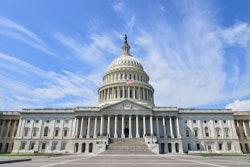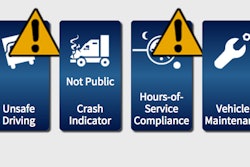The House’s 2020 Department of Transportation funding bill, in addition to its policy riders on hours of service, would require the Federal Motor Carrier Safety Administration to make carriers’ scores within the Compliance, Safety, and Accountability program publicly available once again.
The bill, the annual Transportation, Housing and Urban Development (THUD) appropriations package, cleared the House’s Appropriations Committee on Tuesday, and it now heads to the full House for consideration.
Scores were pulled from public view in December 2015 by the FAST Act highway bill, due to concerns about the data’s efficacy and whether the system accurately portrayed carriers’ safety performance and safety risk.
Specifically, the FAST Act targeted the percentile rankings within the Safety Measurement System (SMS) and the underlying data used to calculate those rankings. The FAST Act bill required the National Academies of Science to study the system and denote any deficiencies. It also called for the NAS to issue recommendations for how FMCSA could reform the program to make it more accurate in its assessment of carrier safety.
In 2017, NAS issued a report recommending sweeping changes to CSA and the SMS.
FMCSA was scheduled to begin testing those recommendations via a pilot program late last year. The agency issued a 10 page report saying it planned to replace the existing CSA Safety Measurement System with a new scoring system. It also said it hoped to improve the quality of data used to score carriers, as well as make it easier for carriers to calculate their scores. The agency said it also might add an absolute scoring system, instead of relying solely on relative scores that compare carriers to their peers.
The House’s THUD appropriations package seemingly would require those reform efforts to continue, though it would require CSA scores to be made public within six months of the bill’s passage.
However, the legislation must still pass the full House and then the Senate — and likely a conference committee between the two chambers — before becoming law.










